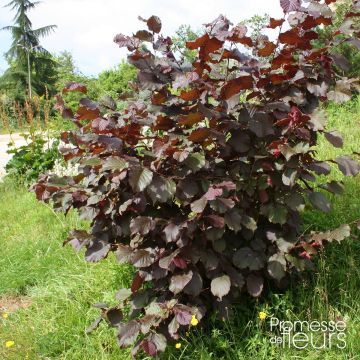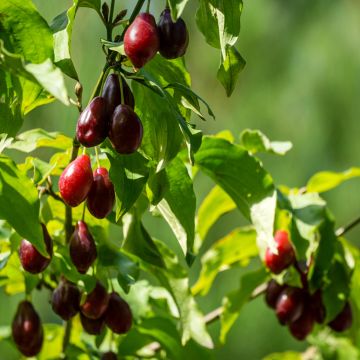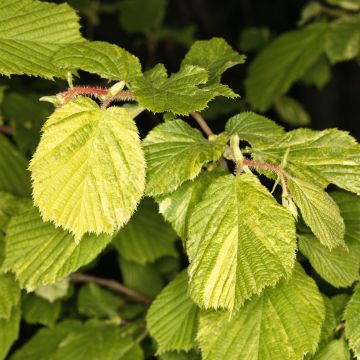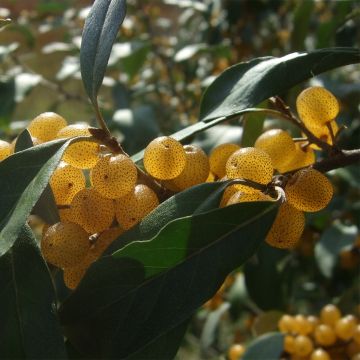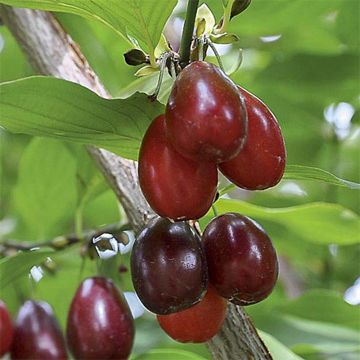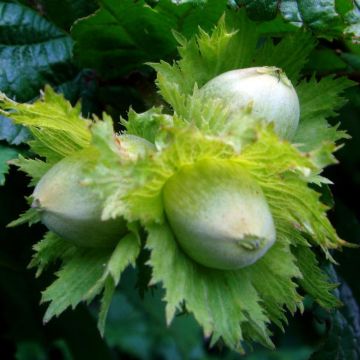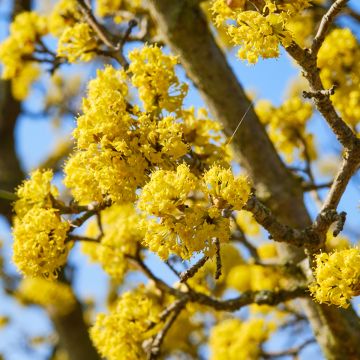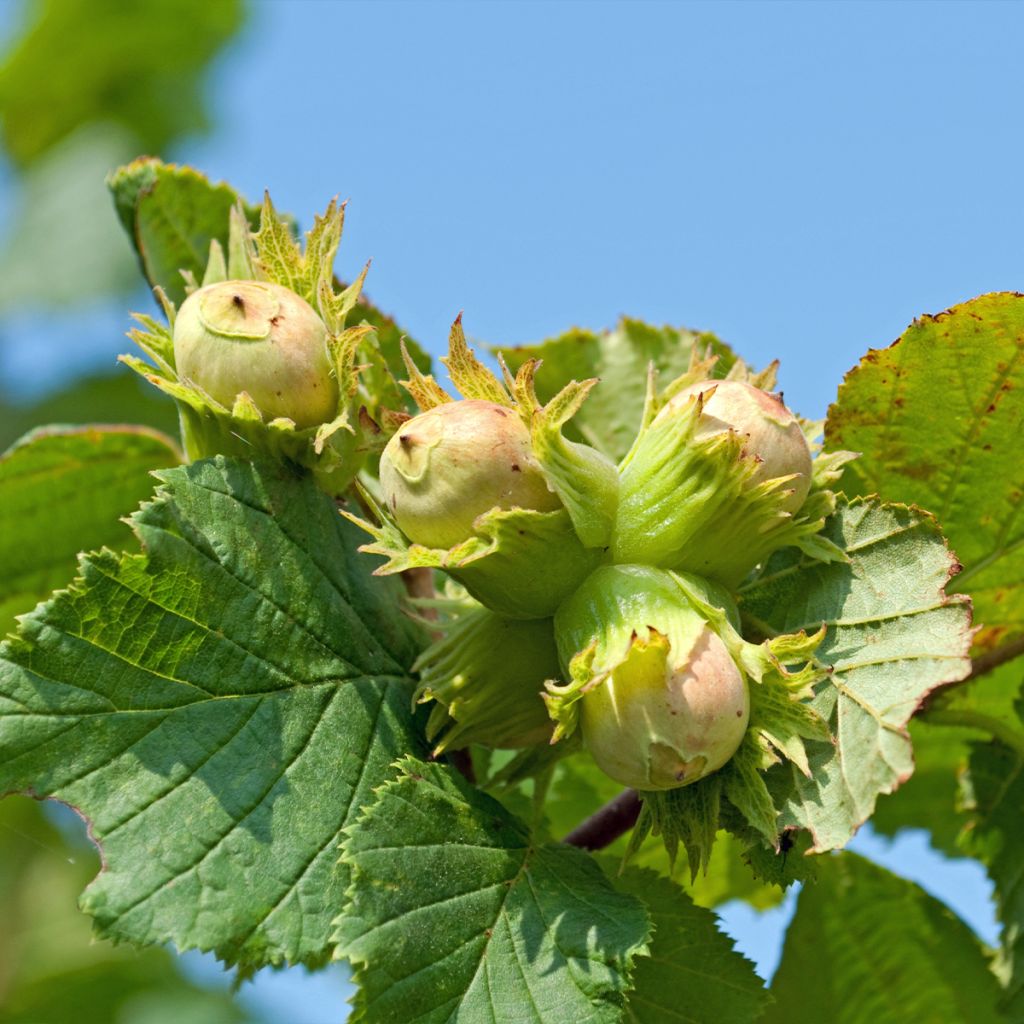

Common Hazel Longue d'Espagne - Corylus avellana
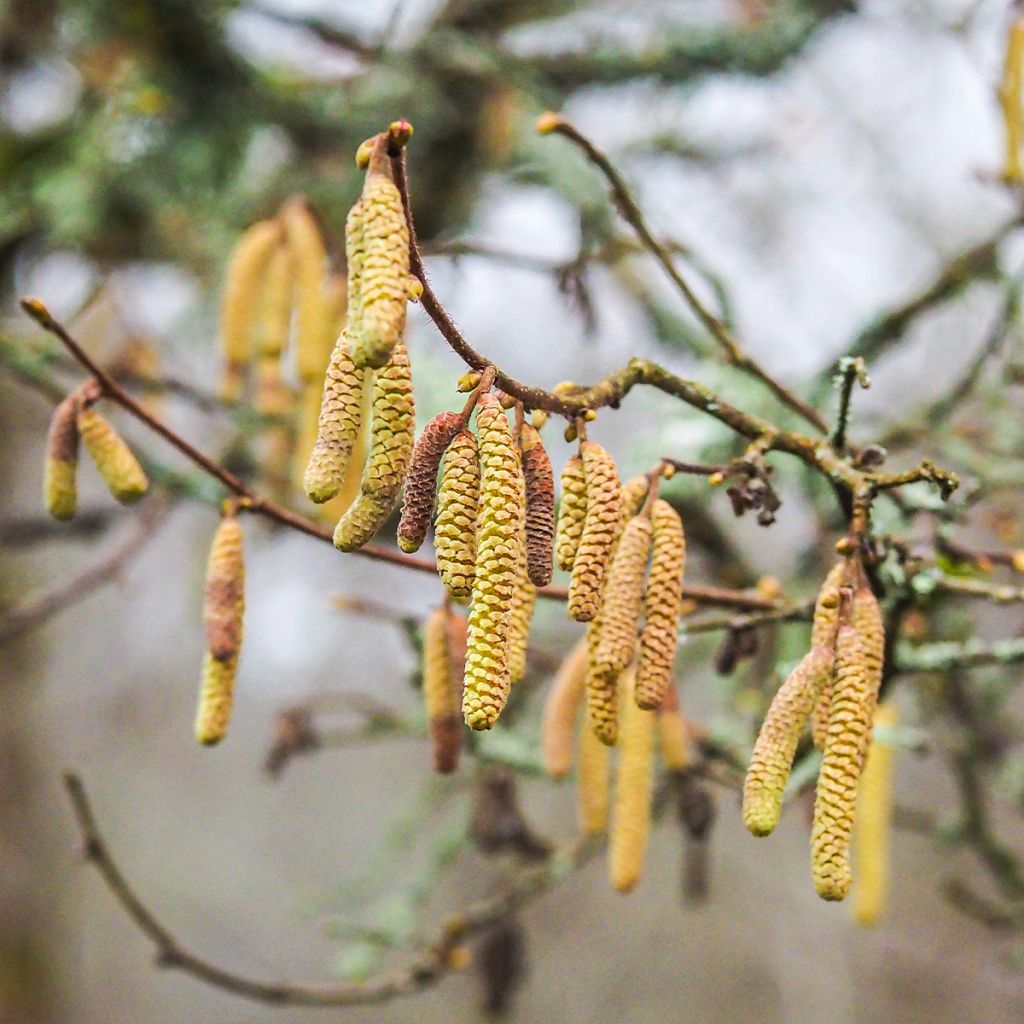

Common Hazel Longue d'Espagne - Corylus avellana
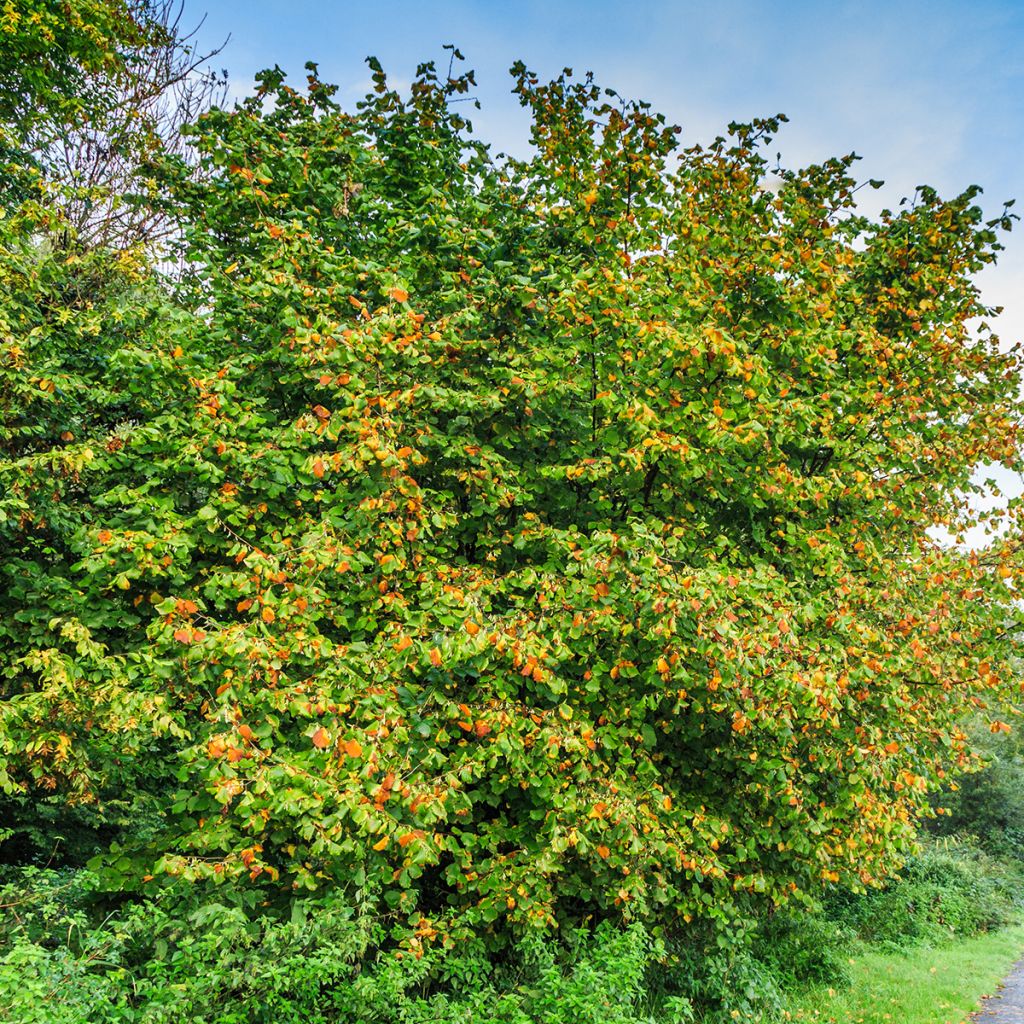

Common Hazel Longue d'Espagne - Corylus avellana
Common Hazel Longue d'Espagne - Corylus avellana
Corylus avellana Longue d'Espagne
Common hazel, European hazel
Special offer!
Receive a €20 voucher for any order over €90 (excluding delivery costs, credit notes, and plastic-free options)!
1- Add your favorite plants to your cart.
2- Once you have reached €90, confirm your order (you can even choose the delivery date!).
3- As soon as your order is shipped, you will receive an email containing your voucher code, valid for 3 months (90 days).
Your voucher is unique and can only be used once, for any order with a minimum value of €20, excluding delivery costs.
Can be combined with other current offers, non-divisible and non-refundable.
Home or relay delivery (depending on size and destination)
Schedule delivery date,
and select date in basket
This plant carries a 6 months recovery warranty
More information
We guarantee the quality of our plants for a full growing cycle, and will replace at our expense any plant that fails to recover under normal climatic and planting conditions.

Description
Corylus avellana 'Longue d'Espagne' is a fruit-bearing Hazel tree that produces large, sweet and fragrant hazelnuts, which are ready to be harvested from September onwards. Moderately vigorous and with few suckers, this fast-growing variety reaches a height of 4m (13ft). Its yellow-green flowering in late winter is relatively decorative, as is the yellow color of its foliage in autumn. It grows in full sun or partial shade, in neutral or calcareous soil that is moist but not too dry. Hardy and easy to cultivate, it can be grown in most regions.
Corylus avellana belongs to the Betulaceae family, just like the Birch, Alder, and Hornbeam. It is native to temperate regions of the Northern Hemisphere and is present throughout most of our mainland territory, although it seems to be declining in the south due to climate change. It is a monoecious fruit tree, bearing male inflorescences and female inflorescences on the same individual. Naturally self-sterile, it requires cross-pollination, which is carried out by wind and bees that transport its pollen to other plants.
The 'Longue d'Espagne' cultivar is one of the best horticultural selections for hazelnut production. It is also known as Kentish Cob, Lambert Filbert, or Du Chilly. This moderately suckering and moderately-sized shrub is particularly suitable for small gardens. It flowers in the form of yellow-green catkins in February or March, adding an aesthetic touch to the garden. The deciduous foliage appears later. Dense and rounded, it gives the Corylus a bushy appearance. The leaves are round-shaped, strongly veined, and measure 6 to 10cm (2 to 4in) long. The fruits that form on 1-year-old shoots are called achenes, commonly known as hazelnuts. In the case of 'Longue d'Espagne', they are large and elongated, with a rounded top. They have a sweet taste and a pleasant aroma, which explains the popularity of this variety. They are usually ready to be harvested from mid-September to October. With good yield and regular production over the years, this variety needs to be pollinated by another variety, such as the Hazelnut 'Merveille de Bollwiller'. Early ripening, this variety will allow you to extend the harvest season as it ripens around mid-August.
The lifespan of the common hazelnut tree is approximately 60 years.
To accompany 'Longue d'Espagne' in a fruit hedge or a countryside garden, consider planting a Blackthorn, from which you can make jams with its blue-black fruits. In the same idea of a slightly wild hedge, also think about Amelanchier, such as Amelanchier alnifolia Saskatoon Berry, with its small spherical fruits resembling blueberries, which can be used in desserts, pastries, or jams. An original shrub, Crataegus pinnatifida 'Big Ball', a Chinese Hawthorn with a low growth (3.50m (11ft)) but with larger fruits than other species, suitable for compotes or jams, and rich in vitamin C, will also be a good companion.
Report an error about the product description
Common Hazel Longue d'Espagne - Corylus avellana in pictures
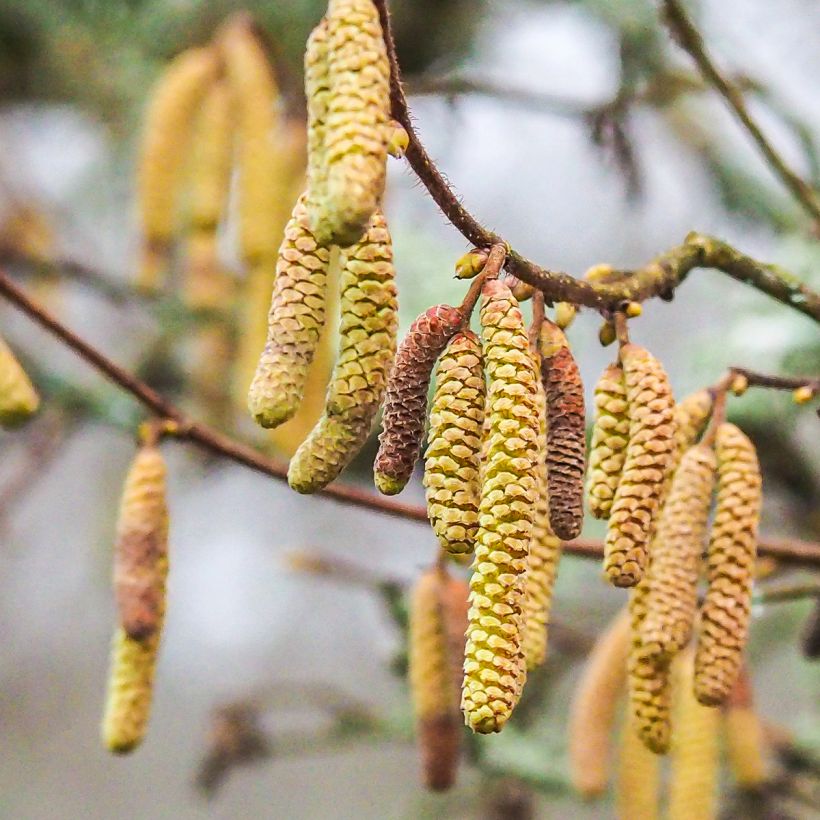

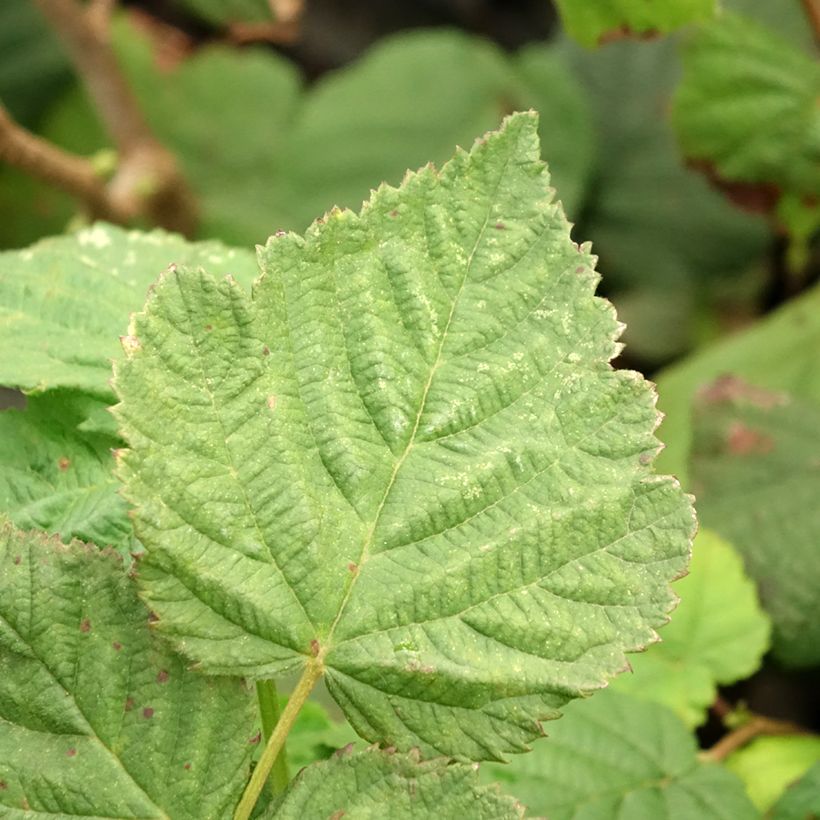



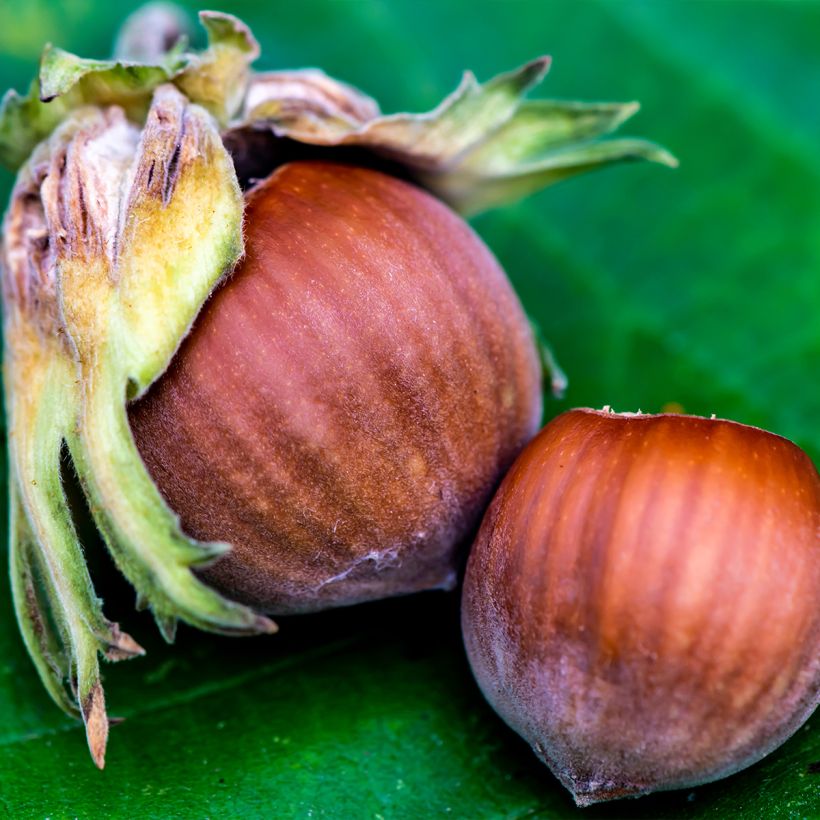

Plant habit
Fruit
Flowering
Foliage
Safety measures
Botanical data
Corylus
avellana
Longue d'Espagne
Betulaceae
Common hazel, European hazel
Cultivar or hybrid
atteinterespiratoire
Cette plante peut entraîner des symptômes allergiques.
Evitez de la planter si vous ou vos proches souffrez de rhinite saisonnière ("rhume des foins").
Davantage d'informations sur https://plantes-risque.info
Planting and care
Corylus avellana 'Longue d'Espagne' thrives in the sun and partial shade in summer. Plant it in any well-drained soil, but not too dry. It tolerates limestone well, but not excessive acidity. Plant preferably in autumn and water well, then water during each summer to promote good hazelnut production. Fruit tree fertilizer will improve the appearance and yield of this bush.
For good fruiting, plant at least two varieties together: for 'Longue d'Espagne', the recommended pollinator is 'Merveille de Bollwiller'. In late autumn, prune the foot by cutting back the interfering branches. It is advisable to prune the hazel every 4 years to regenerate it.
Planting period
Intended location
Care
This item has not been reviewed yet - be the first to leave a review about it.
Similar products
Haven't found what you were looking for?
Hardiness is the lowest winter temperature a plant can endure without suffering serious damage or even dying. However, hardiness is affected by location (a sheltered area, such as a patio), protection (winter cover) and soil type (hardiness is improved by well-drained soil).

Photo Sharing Terms & Conditions
In order to encourage gardeners to interact and share their experiences, Promesse de fleurs offers various media enabling content to be uploaded onto its Site - in particular via the ‘Photo sharing’ module.
The User agrees to refrain from:
- Posting any content that is illegal, prejudicial, insulting, racist, inciteful to hatred, revisionist, contrary to public decency, that infringes on privacy or on the privacy rights of third parties, in particular the publicity rights of persons and goods, intellectual property rights, or the right to privacy.
- Submitting content on behalf of a third party;
- Impersonate the identity of a third party and/or publish any personal information about a third party;
In general, the User undertakes to refrain from any unethical behaviour.
All Content (in particular text, comments, files, images, photos, videos, creative works, etc.), which may be subject to property or intellectual property rights, image or other private rights, shall remain the property of the User, subject to the limited rights granted by the terms of the licence granted by Promesse de fleurs as stated below. Users are at liberty to publish or not to publish such Content on the Site, notably via the ‘Photo Sharing’ facility, and accept that this Content shall be made public and freely accessible, notably on the Internet.
Users further acknowledge, undertake to have ,and guarantee that they hold all necessary rights and permissions to publish such material on the Site, in particular with regard to the legislation in force pertaining to any privacy, property, intellectual property, image, or contractual rights, or rights of any other nature. By publishing such Content on the Site, Users acknowledge accepting full liability as publishers of the Content within the meaning of the law, and grant Promesse de fleurs, free of charge, an inclusive, worldwide licence for the said Content for the entire duration of its publication, including all reproduction, representation, up/downloading, displaying, performing, transmission, and storage rights.
Users also grant permission for their name to be linked to the Content and accept that this link may not always be made available.
By engaging in posting material, Users consent to their Content becoming automatically accessible on the Internet, in particular on other sites and/or blogs and/or web pages of the Promesse de fleurs site, including in particular social pages and the Promesse de fleurs catalogue.
Users may secure the removal of entrusted content free of charge by issuing a simple request via our contact form.
The flowering period indicated on our website applies to countries and regions located in USDA zone 8 (France, the United Kingdom, Ireland, the Netherlands, etc.)
It will vary according to where you live:
- In zones 9 to 10 (Italy, Spain, Greece, etc.), flowering will occur about 2 to 4 weeks earlier.
- In zones 6 to 7 (Germany, Poland, Slovenia, and lower mountainous regions), flowering will be delayed by 2 to 3 weeks.
- In zone 5 (Central Europe, Scandinavia), blooming will be delayed by 3 to 5 weeks.
In temperate climates, pruning of spring-flowering shrubs (forsythia, spireas, etc.) should be done just after flowering.
Pruning of summer-flowering shrubs (Indian Lilac, Perovskia, etc.) can be done in winter or spring.
In cold regions as well as with frost-sensitive plants, avoid pruning too early when severe frosts may still occur.
The planting period indicated on our website applies to countries and regions located in USDA zone 8 (France, United Kingdom, Ireland, Netherlands).
It will vary according to where you live:
- In Mediterranean zones (Marseille, Madrid, Milan, etc.), autumn and winter are the best planting periods.
- In continental zones (Strasbourg, Munich, Vienna, etc.), delay planting by 2 to 3 weeks in spring and bring it forward by 2 to 4 weeks in autumn.
- In mountainous regions (the Alps, Pyrenees, Carpathians, etc.), it is best to plant in late spring (May-June) or late summer (August-September).
The harvesting period indicated on our website applies to countries and regions in USDA zone 8 (France, England, Ireland, the Netherlands).
In colder areas (Scandinavia, Poland, Austria...) fruit and vegetable harvests are likely to be delayed by 3-4 weeks.
In warmer areas (Italy, Spain, Greece, etc.), harvesting will probably take place earlier, depending on weather conditions.
The sowing periods indicated on our website apply to countries and regions within USDA Zone 8 (France, UK, Ireland, Netherlands).
In colder areas (Scandinavia, Poland, Austria...), delay any outdoor sowing by 3-4 weeks, or sow under glass.
In warmer climes (Italy, Spain, Greece, etc.), bring outdoor sowing forward by a few weeks.

































